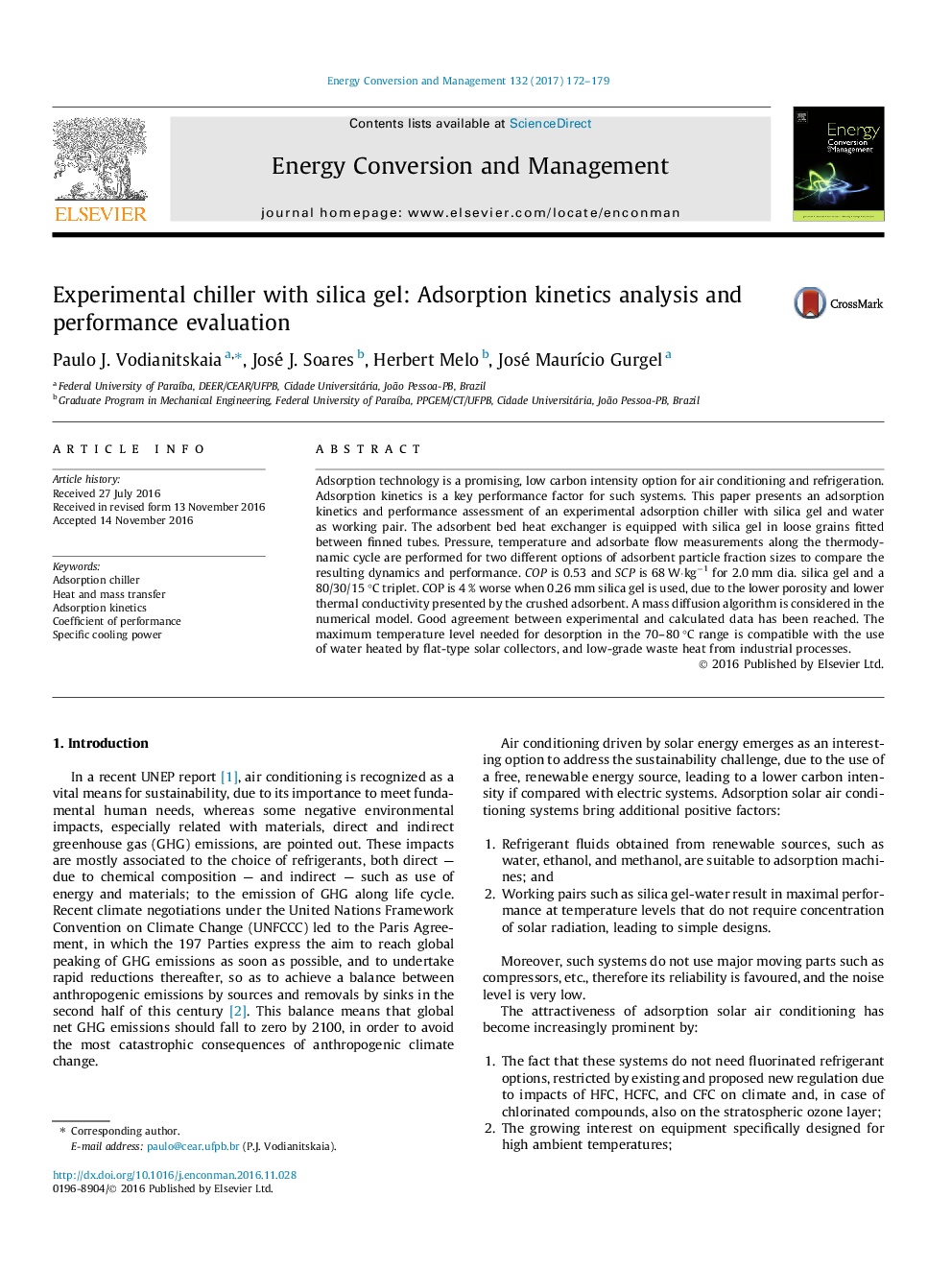| Article ID | Journal | Published Year | Pages | File Type |
|---|---|---|---|---|
| 5013107 | Energy Conversion and Management | 2017 | 8 Pages |
Abstract
Adsorption technology is a promising, low carbon intensity option for air conditioning and refrigeration. Adsorption kinetics is a key performance factor for such systems. This paper presents an adsorption kinetics and performance assessment of an experimental adsorption chiller with silica gel and water as working pair. The adsorbent bed heat exchanger is equipped with silica gel in loose grains fitted between finned tubes. Pressure, temperature and adsorbate flow measurements along the thermodynamic cycle are performed for two different options of adsorbent particle fraction sizes to compare the resulting dynamics and performance. COP is 0.53 and SCP is 68Â Wâ
kgâ1 for 2.0 mm dia. silica gel and a 80/30/15 °C triplet. COP is 4 % worse when 0.26 mm silica gel is used, due to the lower porosity and lower thermal conductivity presented by the crushed adsorbent. A mass diffusion algorithm is considered in the numerical model. Good agreement between experimental and calculated data has been reached. The maximum temperature level needed for desorption in the 70-80 °C range is compatible with the use of water heated by flat-type solar collectors, and low-grade waste heat from industrial processes.
Keywords
Related Topics
Physical Sciences and Engineering
Energy
Energy (General)
Authors
Paulo J. Vodianitskaia, José J. Soares, Herbert Melo, José MaurÃcio Gurgel,
